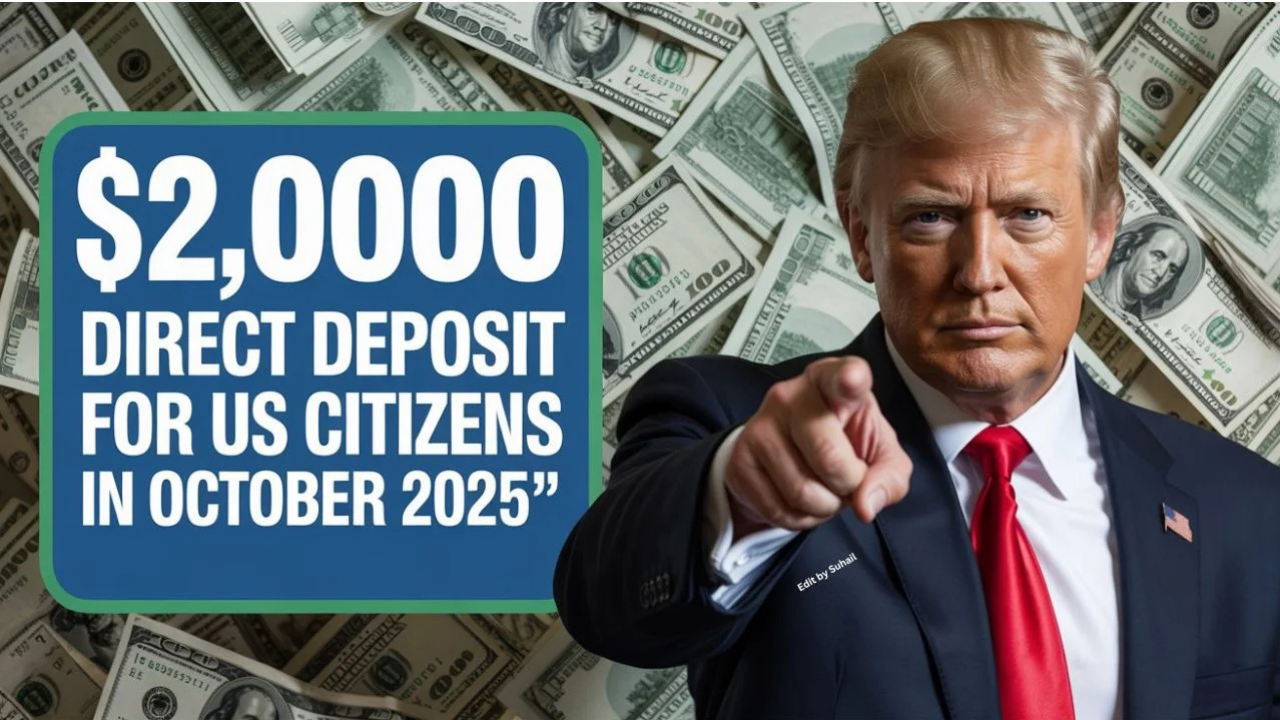$2,000 direct deposit: Online discussions are growing about whether many Americans could receive a new $2,000 “stimulus” or relief package in October 2025. With rising prices, economic concerns, and uncertainty, this prospect seems appealing. But the reality is different—it’s all based on speculation, hopes, and the need to exercise caution.
Where Did The $2,000 Discussion Originate?
This idea isn’t new. After the pandemic, stimulus checks and relief packages became part of the national conversation. Now, there are speculations that every eligible individual could receive another round of $2,000 in October 2025. Websites and social media posts are already outlining “eligibility requirements,” “payment dates,” and how to receive the funds.
However, fact-checkers and those who monitor government activities emphasize that there is no official announcement or legislation authorizing these new $2,000 direct deposits.
The claims about payment schedules and eligibility are being made by rumor-mongering websites and media outlets, rather than by the IRS or the Treasury.
In short: This idea has been suggested, but it hasn’t been confirmed.
What the claims say (if they were true)
However, many of the claims follow the same pattern as previous stimulus rounds. The rumors typically go something like this:
Eligibility criteria (rumored)
- U.S. citizens or legal residents with a valid Social Security Number.
- Must have filed a 2023 or 2024 tax return (so the IRS has your income data).
Globe Charter School - Income limits: Generally, $75,000 or less (single filer), $150,000 or less (joint filer); benefits decrease for incomes above these limits.
- Families with dependent children may receive additional benefits per child.
These rules are similar in concept to previous incentive measures, but they will remain just a concept until the legislation is passed.
Payment dates and process (rumored)
For those with bank account information on file, direct deposit payments will begin in mid-October.
Social Security, SSI, or other benefit recipients may receive their payments earlier (such as October 10th).
Those without direct deposit information may receive a check or prepaid card by mail at the end of October or early November.
One suggestion is to separate the distribution based on the last two digits of the Social Security number and send it in smaller batches on different dates.
IRS Guidance (According to Rumors)
- Update your bank and contact information to avoid payment delays.
Globe Charter School - Once it’s active, track the status using the IRS “Get My Payment” tool (or a similar tool).
- No application required—the IRS will automatically calculate eligibility based on your tax records.
Police Chaplain Program
However, none of this is confirmed yet.
This is probably just a rumor (for now)
- No law has been passed: Without a bill passing through Congress and being signed by the President, the IRS or Treasury has no legal authority to make such payments.
- No official announcement from the IRS or Treasury: Their recent press releases and newsroom articles make no mention of a $2,000 direct deposit plan.
- Fact-checkers debunk the rumor: Independent fact-checkers have labeled the $2,000 claim as unverified or false.
- Scam alert: Many scammers promise stimulus checks to get people to hand over their personal or bank information. The IRS frequently warns against responding to unsolicited calls, emails, or texts about “stimulus payments.”
What You Can Do – If You Want to Be Prepared
Nothing is official yet, but you can take some steps to avoid missing out or falling victim to fraud.
- Keep your tax return up to date
If you haven’t filed your 2023 or 2024 tax return, do so now. This could be one of the requirements if a program passes. - Make sure your bank and address information is correct
If the IRS already has your direct deposit and address on file, any payment will be easier to receive. - Check official sources instead of viral posts
Visit IRS.gov, the U.S. Treasury, and Congress releases – these are the only reliable places to confirm new payment information. - Don’t click suspicious links or share any information
If someone asks you to “apply” or “update your account” via a link, consider it a scam. - Plan your finances carefully
Don’t rely on this potential money – treat it as a possibility, not a guarantee.
Final Thoughts
The allure of a sudden $2,000 deposit is certainly tempting—especially when times are tough financially. But right now, it’s just a rumor, not federal law. If Congress and the IRS ever do authorize such a payment, the preparations you’re making now (filing your taxes, keeping your contact information up to date) could come in handy. Until then, patience, skepticism, and relying on official channels are your best course of action.
If you’d like, I can help you stay informed about when and if this payment actually happens—setting up alerts from the IRS, monitoring relevant legislation, and keeping an eye on credible updates. Should I set all that up for you?

